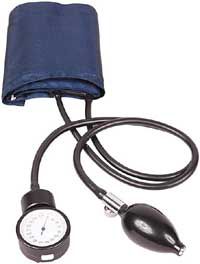Arthritis is inflammation in one or more of your joints. Normally associated with senior citizens, you can get arthritis at any age. Symptoms include pain, stiffness, swelling, redness and a decrease in range of motion in a joint. These symptoms are often more acute in the mornings and subside throughout the day.
The pain of arthritis is associated with joint damage. Joints are those moveable points where two or more bones meet. The ends of these bones are coated in cartilage to allow these bones to slide over each other smoothly. A tough membrane, known as the joint capsule, encloses all the joint parts. The synovium lines the joint capsule and secretes synovial fluid, which lubricates the joint and nourishes the cartilage.
Osteoarthritis
In osteoarthritis, normal wear and tear damages the cartilage in between bones. This damage may become significant enough to allow bone-on-bone contact, resulting in the ends of bones grinding against one another. Osteoarthritis is the most common form of arthritis. It is a chronic disease, caused by many years of use.
This degenerative disease worsens over time, causing increasing pain and disability. Doctors use imaging, like x-rays and MRI, to diagnose arthritis. A doctor may order blood tests to rule out other causes of pain, like rheumatoid arthritis. Your doctor may opt for joint fluid analysis, or send fluid drawn from the joint to the lab to rule out gout and infection.
Rheumatoid Arthritis
Rheumatoid arthritis describes a condition where the body’s own immune system attacks the joint and inflames the synovium, causing swelling, pain and redness. This is a very destructive disease, destroying cartilage and bone within the joint. Rheumatoid arthritis is a chronic condition, causing pain, swelling and loss of function, and can cause long-term disability.
Gout
Gout is a form of arthritis caused by excessive levels of uric acid in your blood. Not everyone with high uric acid levels experiences gout, but some people accumulate this uric acid in the synovial fluid in one joint. These people may produce too much uric acid, or their bodies have a hard time getting rid of it. Acute gout typically affects one joint, often the big toe. Chronic gout, or gout that keeps coming back, tends to affect more than one joint. There is no known exact cause for gout, but some groups of people seem to experience gout more than others do, including men, post-menopausal women and people who drink alcohol.
Please refer to our most recent Franchise Disclosure Document for important details.




























